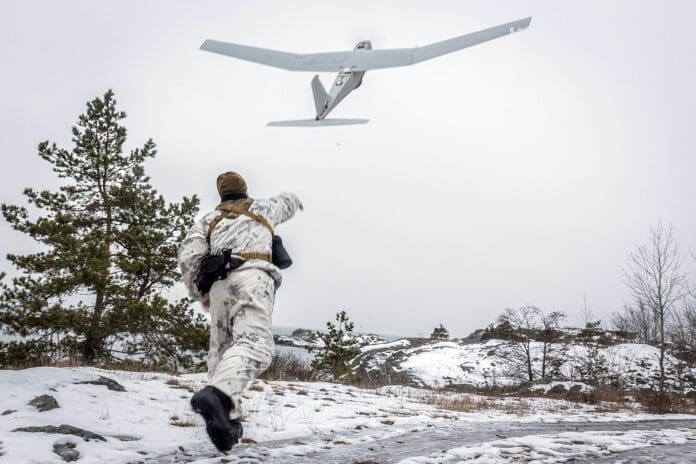
This post is also available in:
 עברית (Hebrew)
עברית (Hebrew)
AeroVironment has introduced new capabilities for its Puma LE small unmanned aircraft system (sUAS), aimed at expanding its operational roles well beyond traditional surveillance. Two major enhancements — an integrated laser target designator and a universal gimbal kit — now give the compact platform the ability to support precision strike missions and adapt quickly to changing field conditions.
According to the press release, the system’s latest configuration includes the HD59 gimbal from Trillium Engineering, a compact electro-optical/infrared (EO/IR) payload weighing under 2 kilograms. Despite its small size, the gimbal incorporates a NATO STANAG 3733-compliant 50-millijoule laser designator, enabling the Puma LE to mark targets for guided munitions. It also includes a suite of multi-spectral sensors: EO, mid-wave infrared (MWIR), long-wave infrared (LWIR), and short-wave infrared (SWIR), with See Spot capability for laser spot detection. These features support day-and-night target identification and laser designation in a single pass — functionality previously limited to larger unmanned or manned platforms.
Alongside this, the introduction of the Universal Gimbal Kit allows field operators to rapidly swap payloads depending on mission needs. Designed for modularity, the kit supports plug-and-play integration of various gimballed sensors without requiring depot-level maintenance. This streamlines transitions between ISR, targeting, and other mission sets, directly in the field.
The Puma LE remains a lightweight and portable system, built for use in complex and rapidly changing operational environments. With the new HD59 payload, it offers more than 3.5 hours of flight time, making it suitable for extended missions across multiple domains. Its compact size and ease of deployment — including hand-launch capability — make it especially relevant for dismounted troops and special operations units operating in contested or remote areas.
This update reflects a broader trend toward multi-role platforms in tactical environments, where systems must adapt quickly and maintain flexibility. With its new targeting and modular payload options, the Puma LE is positioned to support a wider array of mission profiles while retaining the mobility and ease of deployment that define small unmanned systems.
























